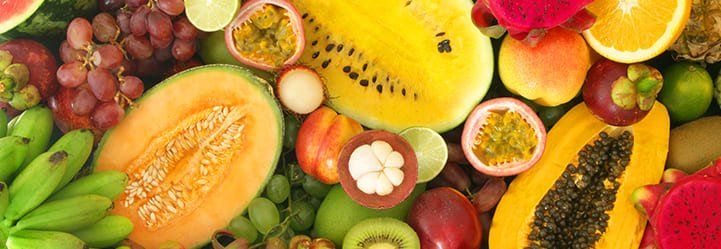Pulp of fruit and its use in the food industry: 5 newest ways to do it
Alimentos SAS • Nov 24, 2021
The pulp of fruit has been a prominent ingredient in the food industry for some time now. It contributes to the flavor, sweetness, and nutrition level of food products. Read on to discover the five newest ways manufacturers are using it.
Pulp of fruit: the basics
Fruit pulp or purees are produced by processing the edible parts of the fruit. They have a mushy texture, and often contain traces of fruit (Allied Market Research, 2021). This peculiar texture comes from the extraction of juice during processing (Transparency Market Research, 2021).
It is a popular ingredient among food and beverages manufacturers to make jams, jellies, marmalades, fillings for different types of pastry, dairy products, and confectionery (Allied Market Research, 2021).
Tropical fruits purees (banana, mango, pineapple, papaya, and guava) dominate the global market. Nonetheless, experts expect the citrus segment to grow thanks to its nutritional content, especially in the beverage industry (Grand View Research, 2020).
Overall, the pulp of the fruit stands out among natural ingredients like frozen fruits or concentrates. It retains taste and nutrients from fresh fruit (Dohler, n.d.).
It is also attractive to industry players for being more efficiently handled in logistics than whole fruit. It has a longer storage life than fresh fruit without much alteration to natural content and flavor. Additionally, this factor means reduced transportation and storage costs (Persistence Market Research, 2017).
Innovative ways to integrate the pulp of fruit into food production
Consumers are focusing on healthier and cleaner food choices. In this regard, there are some innovative applications of this ingredient. Many of them are useful for creating attractive products (Allied Market Research, 2021). These are our picks.
As an enhancer
Healthy eating habits among consumers have spotlighted the use of natural and organic materials instead of artificial flavors in food production. Pulp of fruit shines among other alternatives as it successfully brings nutrients from fresh fruit, enhancing the taste and overall color of the finished product (Market Research, 2021). In fact, they are known for carrying an intense flavor of the fruit (Transparency Market Research, 2021).
As a sweetener
As it retains major traits from fresh fruit, pulp also works for sweetening food products naturally. Moreover, this application aligns with consumers’ preferences regarding healthier, more natural options (Persistence Market Research, 2017).
For nutrient value
The profile of this ingredient also leads to its use in creating functional, highly nutritious products. For example, some manufacturers develop fruit pulp products from so-called super fruits (Persistence Market Research, 2017).Others include it in infant and toddler food to enhance their diet (Grand View Research, 2020).
Furthermore, it also comes in handy when manufactured with non-GMO materials to cater to clean-eating consumer preferences (Persistence Market Research, 2017).
As an additive
Manufacturers also use this ingredient or its remnants to create additives for other food products. For example, apple pomace is a rich source of pectin, carbohydrates, fibers, and minerals. As such, it can be used as an energy source or an ingredient in confectionery industries (Supekar, 2017).
Likewise, grape pomace generated during winemaking serves as a fermentation agent due to its carbohydrate content (Supekar, 2017).
As a texture agent
Finally, companies make the most of pulp’s dense nature to achieve smooth textures in products like beverages, dairy, and pastry fillings (Grand View Research, 2020). For example, sorbetto producers churn fruit puree to reach a consistency similar to regular ice cream while being dairy-free (The Perfect Scoop, 2017).
As shown, there are many benefits in including the
pulp of fruit in food production. Its traits make it a leading ingredient to create goods that answer consumers’ interest in healthier, more natural options.
















